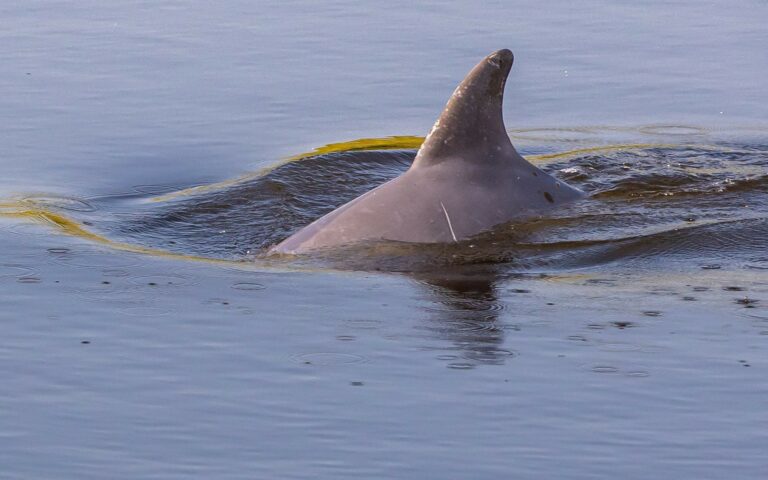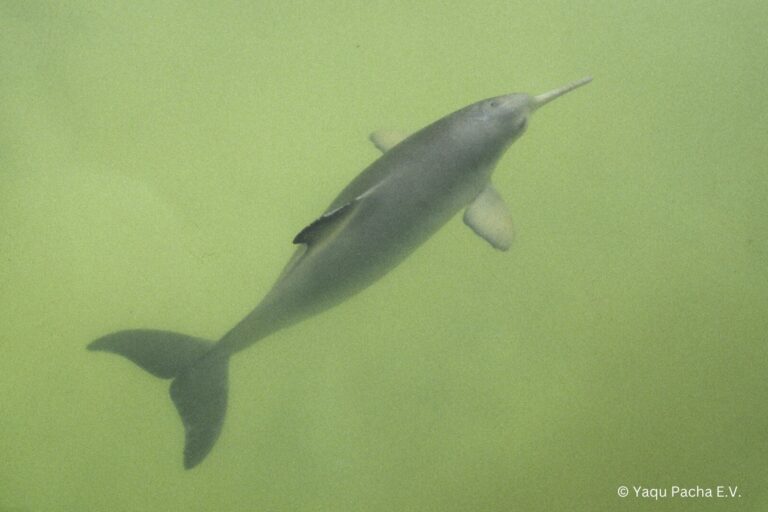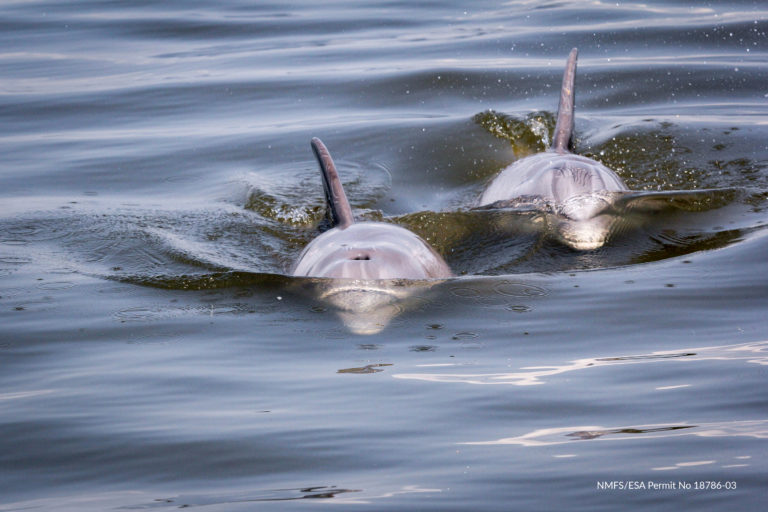For Immediate Release
March 03, 2022
Testing Confirms New Tool to Identify Wild Dolphins is Faster and More Efficient

Ocean water temperatures are rising. Oil spills and plastics are pervasive. Oceans are more acidic as their waters absorb carbon dioxide. Fish populations and other food sources are diminishing. These are just some of the devastating challenges facing wild dolphins today. Long-term monitoring is essential to establish baseline data on dolphin health parameters and population dynamics to determine if animals are at risk.
The National Marine Mammal Foundation (NMMF) and Western EcoSystems Technology, Inc. (WEST) previously introduced their new rapid photo-ID tool, finFindR that is critical for animal conservation by helping determine threats to wild dolphin populations. This efficient and cost- effective automated software system identifies the dolphins using photographs of unique nicks and notches on their dorsal fins. The free opensource software application allows researchers to compare fin characteristics in their dolphin photographs with those in finFindR’s catalog of known individuals that is quicker and equally accurate to manual identification.
“By taking photos of individual dolphins over time, scientists can determine how many are in a population, how long they live, and which ones have calves,” according to the NMMF Chief Scientist for Conservation Medicine Dr. Lori Schwacke. “This type of information is essential for conservation and recovery efforts.”

In the past, researchers relied on manually comparing photographs of shapes and marks of fins of individual dolphins with thousands of images. Manual identification of a dolphin’s fin is very time consuming, especially when there are many dolphins in the population. The photos must first be screened and cropped to isolate a dolphin’s fin, and then the processed image must be compared to a catalog of previous dolphin fin photos.
“The finFindR application automates this task, saving time and money,” said Todd Speakman, NMMF Conservation Medicine Biologist. “The software allows researchers to expand the scope of their studies and analyze them more quickly.”

New testing, discussed in a recently published article in Marine Mammal Science, verifies the effectiveness of finFindR. The tests compared manual searching of dorsal fin images by experienced dolphin researchers to exploring the images using finFindR. Scientists were able to use both approaches with similar accuracy, but the finFindR method required searching far fewer photographs (10 versus 124). During those tests, finFindR found the correct dolphin identity in 88% of the cases in the number 1 ranked ID. Ninety-seven percent of cases were correctly identified within the top 50 ranked positions.
This recent testing confirms what researchers were already seeing through usage. Speakman emphasized that “a survey conducted at a 2021 workshop for U.S. Atlantic coast researchers revealed that finFindR is now the most widely used tool for identifying bottlenose dolphin fins, used by over 60% of research programs. Additionally, 50% of active contributors to the Gulf of Mexico-wide dolphin catalog are currently using finFindR as their primary computer-assisted matching application.”
The workflow for finFindR consists of four steps: (1) autonomous image processing to find and isolate dorsal fins in unedited field photographs, (2) isolation of each fin’s trailing edge, (3) computation of a “score” based on distinguishing features, and (4) computation of the proximity of a query image’s score to the scores of all other fins in a reference catalog. finFindR’s wiki contains specific information about implementing each workflow step and should generally be considered the most up-to-date guide for the use of the software system.
“The use of finFindR maintains the accuracy of experienced researchers while drastically reducing typical dolphin photo-ID processing times. Now that we have developed and validated the software with dolphin populations in the U.S., the software will be used to facilitate conservation of dolphin species globally,” Schwacke concluded.
For press inquiries and more information, please contact st**********@**mf.org
Special thanks to Jaime Thompson (Valdez Ai Consulting) and Trent McDonald (McDonald Data Sciences) for their roles in the development and maintenance of the finFindR application.
###
About NMMF: The National Marine Mammal Foundation (NMMF) is a 501(c)(3) nonprofit organization recognized globally as a leader in marine mammal science, medicine, and conservation. With a mission to improve and protect life for marine mammals, humans, and our shared oceans through science, service, and education, our team of forward-thinking aquatic and wildlife veterinarians, scientists, conservationists, care experts, and analysts, is answering critical questions about the health of marine mammals. We are committed to protecting marine animals and conserving at-risk, threatened, and endangered cetacean species world-wide. In addition to publishing our findings in scientific literature, we share our discoveries with children and the community through our Education and Outreach program. More information at NMMF.org.





